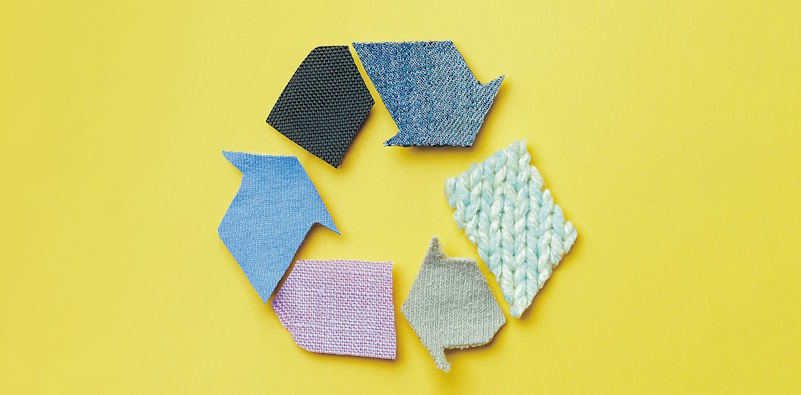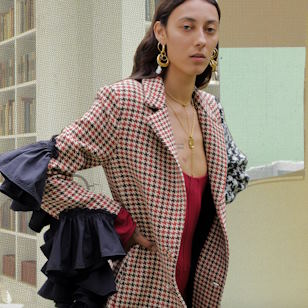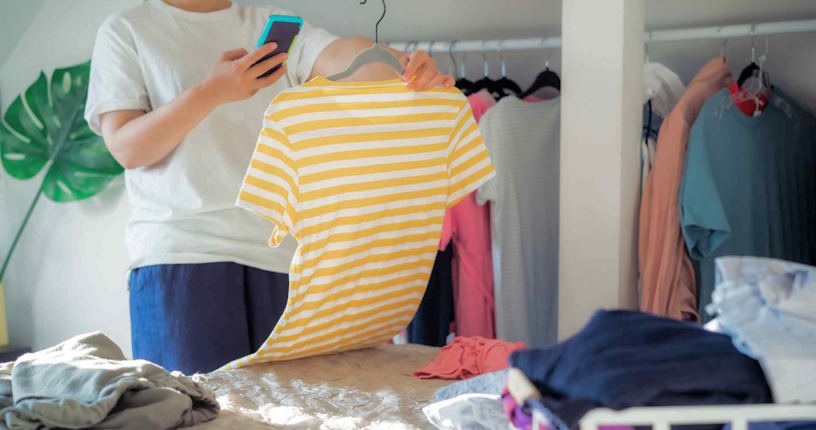
Fast fashion, with its rapid production and disposal of clothing, has left us with a staggering problem: textile waste. Yet, amid this sea of discarded garments and environmental uncertainty, a beacon of hope shines brightly—upcycling. This transformative practice not only addresses the issue of waste but also empowers individuals to turn their old, forgotten clothing into stylish treasures.
The Impact of Fast Fashion
- The Rise of Fast Fashion and Its Consequences
Fast fashion has revolutionized the way we consume clothing, with brands churning out new styles at breakneck speeds to meet consumer demand. While this has made fashion more accessible, it has also resulted in a darker side: a relentless cycle of production and disposal. The consequence? Mountains of discarded clothing items clogging up landfills and contributing to environmental degradation.
- The Staggering Amount of Textile Waste Generated Annually
To put things into perspective, the fashion industry is one of the world’s largest polluters, generating an estimated 92 million tons of textile waste annually. This waste not only takes up valuable landfill space but also releases harmful chemicals and dyes into the environment. It’s high time we explore sustainable alternatives to this wasteful pattern.
Understanding Upcycling
- Defining Upcycling and Its Key Principles
Upcycling is more than just a buzzword; it’s a transformative approach to fashion that involves repurposing old clothing items into new, stylish pieces. Unlike recycling, which breaks materials down, upcycling breathes new life into them. It’s all about creativity, innovation, and reducing waste in the process.
-
 Contrasting Upcycling with Recycling and Repurposing
Contrasting Upcycling with Recycling and Repurposing
While recycling involves breaking down materials to create new ones, and repurposing involves using an item for a different purpose, upcycling takes a unique approach. It elevates the original material’s value, resulting in a higher-quality end product.
- The History and Evolution of Upcycling
Upcycling is not a recent trend; it has roots in the thrifty practices of generations past. From patchwork quilts to hand-me-downs, people have been repurposing clothing for centuries. Today, upcycling has evolved into a creative movement embraced by eco-conscious individuals and fashion-forward thinkers.
Getting Started with Upcycling
- Assessing Your Old Clothing Inventory
Before you start your upcycling journey, take a close look at your old clothing items. Identify pieces with sentimental value, unique fabrics, or interesting features that could be transformed into something new.
- Choosing Suitable Materials for Upcycling Projects
Not all clothing items are suitable for upcycling. Consider the fabric, condition, and potential of each piece. Look for natural fibers like cotton, denim, and wool, as they are more versatile and durable.
- Tools and Equipment Needed for Upcycling
To embark on successful upcycling projects, you’ll need some basic tools and equipment. These may include sewing machines, needles, thread, scissors, fabric glue, and embellishments like buttons and patches.
Creative Upcycling Ideas
- Transforming Old Jeans into Trendy Denim Shorts
A classic upcycling project involves converting old jeans into stylish shorts. You can experiment with distressing, adding patches, or even embellishing them with embroidery.
- Refashioning Oversized Shirts into Stylish Blouses
Turn those oversized shirts into fashionable blouses by taking in the sides, changing the neckline, or adding a belt to cinch the waist.
- Customizing Vintage Sweaters with Embroidery or Patches
Give vintage sweaters a modern twist by adding embroidered designs or patches. This transforms a dated garment into a unique and trendy piece.
- Upcycling Outdated Dresses into Fashionable Skirts
If you have old dresses that you no longer wear, consider turning the skirt portion into stylish standalone skirts. Pair them with your favorite tops for a fresh look.

DIY Upcycling Projects
- Step-by-Step Instructions for a Basic Upcycling Project
For those new to upcycling, a step-by-step guide for a simple project can provide the confidence to get started. Whether it’s turning a t-shirt into a tote bag or repurposing a scarf into a headband, small projects can yield big rewards.
- Advanced Upcycling Techniques for Experienced Crafters
If you’re an experienced crafter, challenge yourself with advanced techniques like patchwork, fabric dyeing, or creating complex garment transformations.
- Tips for Salvaging Damaged Clothing Items
Don’t despair if your clothing has minor damage. Learn techniques for repairing tears, holes, or worn-out areas before upcycling.
Upcycling for Kids and Teens
- Engaging Children and Teenagers in Upcycling Activities
Upcycling is a fantastic way to engage young minds in creative and eco-friendly activities. Encourage kids and teens to join in by making it a fun family or classroom project.
- Fun and Age-Appropriate Upcycling Projects for Kids
Explore age-appropriate upcycling projects for kids, such as turning old t-shirts into colorful tote bags or transforming plain sneakers into personalized works of art.
- Encouraging a Sense of Environmental Responsibility Through Upcycling
Teaching the next generation about the environmental impact of clothing consumption and the value of upcycling fosters a sense of responsibility and sustainability.
The Economic Benefits of Upcycling
- Saving Money by Upcycling Instead of Buying New Clothes
One of the most appealing aspects of upcycling is its cost-effectiveness. Instead of splurging on new fashion items, you can create a unique wardrobe from pieces you already own.
- The Potential for Upcycling as a Small Business or Side Hustle
For those with a passion for upcycling, it can even become a source of income. Explore the potential of selling your upcycled creations online or at local markets.
- Exploring Online Platforms for Selling Upcycled Fashion
Discover online platforms and marketplaces where you can showcase and sell your upcycled fashion pieces to a broader audience.
Environmental Benefits of Upcycling
- Reducing Textile Waste and Landfill Contributions
Upcycling plays a crucial role in reducing textile waste and diverting clothing from landfills, contributing to a more sustainable future.
- Lowering the Carbon Footprint of the Fashion Industry
By extending the life of clothing items through upcycling, we reduce the need for new production, ultimately lowering the fashion industry’s carbon footprint.
- The Role of Upcycling in Promoting Sustainable Fashion
Upcycling is a powerful tool in promoting sustainable fashion practices, encouraging consumers to think critically about their clothing choices.




